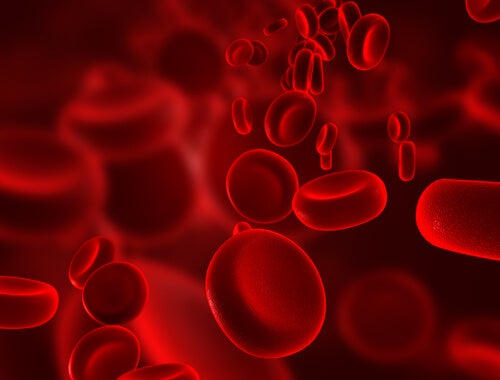To prevent thrombosis, it is essential to bring about healthy lifestyle habits, reduce salt intake, and exercise.

Thrombosis is a disease that affects many people in the world, physical inactivity, tobacco use and an inadequate diet are some of the causes of the condition. Discover what a thrombosis and how to prevent it.
Partial or complete detachment from the wall of the blood vessel thrombus allows clot embolice vital organs such as the brain, heart, lungs, or arteries of the legs. Blood clots that flow freely within the vasculature obstruct blood flow. As a result, pathological conditions that threaten life, such as a stroke, infarction myocardium, pulmonary embolism, or gangrene accident may occur.
Venous thromboembolism is a disease that includes deep vein thrombosis and pulmonary embolism. Risk factors contributing to venous thromboembolism are varied and include:
- Immobilization
- Hypercoagulability
- Damage on the wall of veins
- Age
- Surgery (especially orthopedic surgery of knee and total replacement)
- Cancer
- Heritage
- Pregnancy
- Increased levels of estrogen (due to contraception or HRT taken by mouth)
- Obesity
- Smoking
- Crohn's disease
Deep vein thrombosis is the most common form of venous thrombosis. The signs and symptoms of DVT include: discomfort, heaviness, throbbing pain, itching, or feeling of heat in the legs; changes in the skin of the leg, such as discoloration, thickening or ulceration; swelling of legs, ankles, or feet.
Syndrome post – thrombotic takes place in at least half of the patients with DVT. Chronic leg swelling, calf pain, heaviness / fatigue, skin discoloration or characterized in the affected extremity venous ulcers. Quality of life is significantly affected in patients with this condition.
Pulmonary embolism (PE) is a complication of DVT. The symptoms and signs of the EP include:
- Sudden shortness of breath
- Chest pain
- Coughing up blood
- Fast or irregular heart rate
- Dizziness
Deep venous thrombosis prevention: healthy lifestyle and regular check-ups

To reduce the risk and help prevent deep vein thrombosis, follow these steps:
- Keep an active lifestyle and do exercise regularly, daily if possible. Walking, swimming and biking are excellent activities.
- Controls your weight with exercise, as well as through the consumption of a healthy diet.
- If you smoke, do so, nicotine (gum or patches, aerosols) therapy and support groups can make this much easier.
- Check your blood pressure regularly; take measures to reduce, if necessary.
- Report any personal or family history of blood clotting problems to your doctor.
- It discusses alternative birth control pills or therapy HRT with your doctor.
- If you are on a plane for more than four hours, walking or make stretching of legs in your seat and stay well hydrated, avoiding the consumption of alcohol.
- During pregnancy, ask your doctor what you can do to prevent DVT.
The prevention of blood clots
You can help prevent blood clots if:- Wear loose clothing.
- You raise the legs above the heart from time to time.
- Special stockings USAS (called compression stockings) If your doctor prescription is.
- You do exercises that your doctor tells you.
- You change your position frequently, especially during a long journey.
- Do not stop you not sit for more than 1 hour at a time.
- You eat less salt.
- You try not to hit or hurt your legs and not to cross them.
- You don't use pillows under your knees.
- Raises the bottom of your bed a few centimeters.
- Take all medications that the doctor prescribes.
- You keep you active and moving.

0 comentarios:
Post a Comment